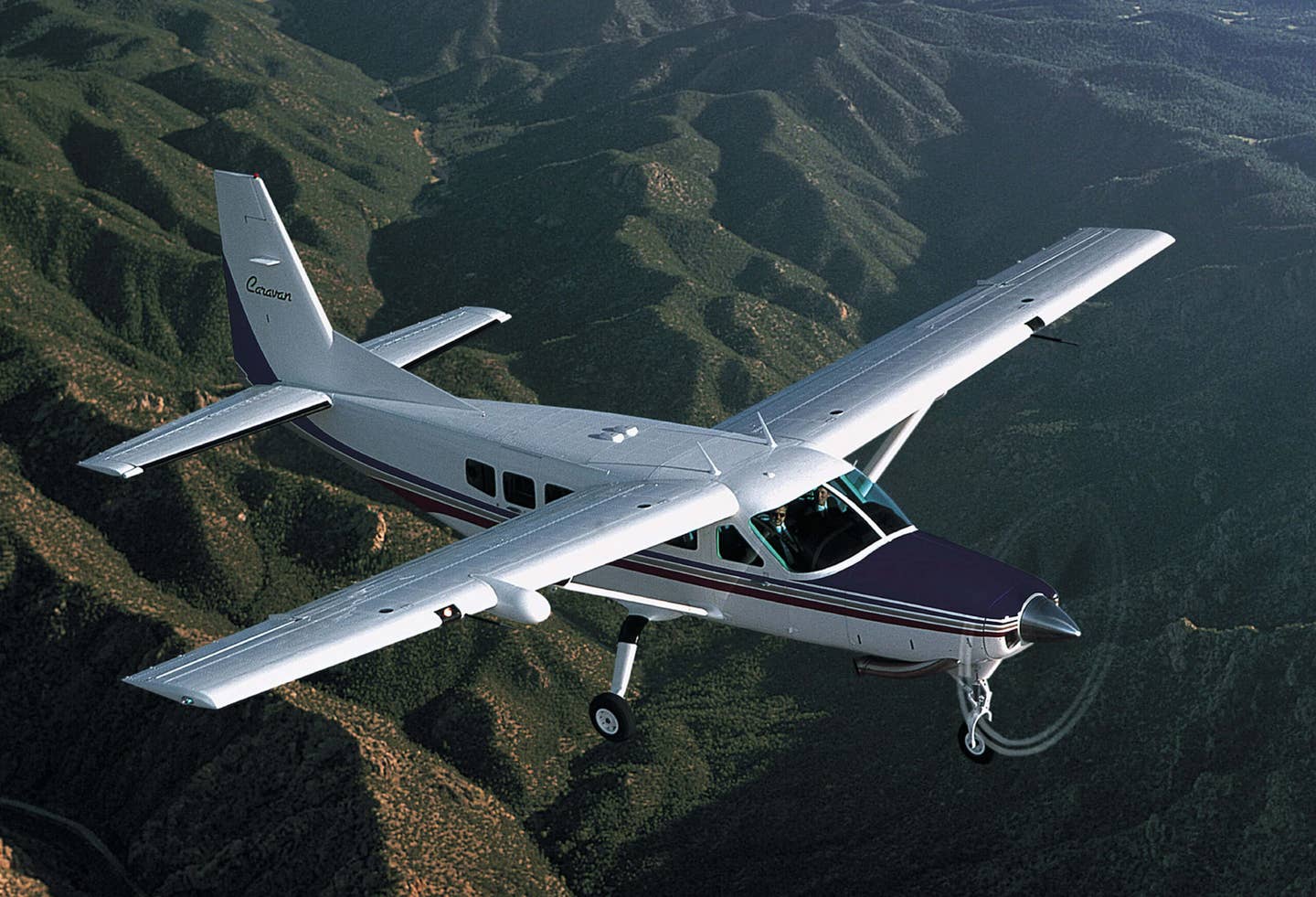
Research and development for the TriChute is being done on the Cessna Caravan Cessna
Aircraft recovery parachute maker BRS says more than 300 lives have been saved after pilots deployed the company’s system, one that gently returns an aircraft in distress back to earth. Cirrus reports more than 60 BRS deployments, many on the 3,600-pound SR22. Cirrus is also bringing a BRS parachute to the 6,000-pound SF50 Vision Jet.
But would an aircraft owner/operator of a much larger aircraft, someone already aware of the benefits of a BRS-like system, be willing to retrofit a new pilot-controlled technology to save its airplane, passengers and cargo? A recent survey conducted by Florham Park, New Jersey-based Aviation Safety Resources (ASR) makes the firm believe the answer is yes. The company is already creating the TriChute Safe Landing system, capable of rescuing an 8,000-pound aircraft such as a Cessna Caravan.
The TriChute system differs significantly from that of BRS. The ASR TriChute functions by separating in flight the fuselage from the wings of the aircraft. Bob LaFrance, ASR’s chief technical adviser, said the key is to separate the fuselage with its important cargo from the less important and often heavy (as in full of fuel) wings. LaFrance said the danger of an inflight fire when separating the wings, an objection he often hears, is a myth.
"Using our system, there are no products for combustion when the wings separate." To ASR, wing separation isn't simply a way to split the cargo off from the fuel source, however. ASR wants to parachute the fuselage and wings back to earth in shape to later be rejoined, making the aircraft airworthy again. Insurance companies may well support the TriChute idea when installation costs are measured against paying for a full hull loss. LaFrance told Flying the weight penalty for installation of a TriChute system would be slightly less than 300 pounds per aircraft.
ASR’s idea for bringing airplanes back in an emergency isn’t actually new but is based on a decades-old patent originally filed by Dario Manfredi back in 1967 and successfully tested using a Stinson Voyager. ASR and an updated version of that original patent are the technology behind the TriChute system. ASR is co-owned by Manfredi’s son and daughter, Dario and Savia Giarraffa.
Company spokesman Lynette Viviani said ASR’s recent survey to a number of commercial and private operators and the positive feedback the company received could well be spurred on by the large number of heavier airframes lost over the past few decades.
ASR is looking for the right partner to help bring the TriChute system to market, an effort Dario Manfredi said requires about $4 million. Manfredi believes ASR TriChute can be market-ready 36 months after the investment deal is in place.

Sign-up for newsletters & special offers!
Get the latest FLYING stories & special offers delivered directly to your inbox






